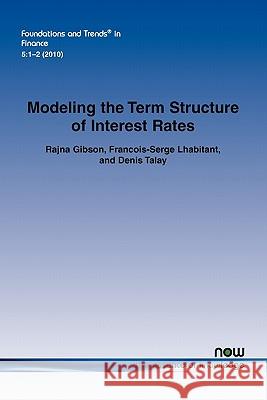Modeling the Term Structure of Interest Rates: A Review of the Literature » książka
Modeling the Term Structure of Interest Rates: A Review of the Literature
ISBN-13: 9781601983725 / Angielski / Miękka / 2010 / 172 str.
Modeling the Term Structure of Interest Rates provides a comprehensive review of the continuous-time modeling techniques of the term structure applicable to value and hedge default-free bonds and other interest rate derivatives. The authors offer a unifying framework in which most continuous-time term structure models can be viewed and compared in terms of their similarities, their idiosyncratic features, and their main contributions and limitations. Modeling the Term Structure of Interest Rates is organized as follows: Section 1 presents the main objectives and basic definitions and notation; Section 2 proposes an interest rate models' taxonomy; and Section 3 introduces the mathematical framework used throughout the survey. Section 4 presents the main economic theories of the term structure of interest rates. Section 5 provides a unifying framework to present the family of short-term rate-based term structure models, which encompasses some of the most popular one and multi-factor short-term rate models developed at earlier stages of the term structure modeling literature. Section 6 reviews the second family of forward rate-based models grouped under the name the Heath, Jarrow and Morton (1992) family of term structure models. Section 7 presents the recently developed Libor or market models while preserving the same unifying mathematical framework. Section 8 surveys the empirical evidence on interest rate models' estimation and calibration issues and list selected empirical references which are useful for practitioners interested in the validity and performance of these models. Section 9 introduces a novel approach to characterize and quantify the degree of model misspecification associated with interest rate models. Section 10 discusses some of the challenges posed by running simulations of continuous-time term structure models. Section 11 concludes the survey. Finally, some useful mathematical results can be found in the Appendices.











